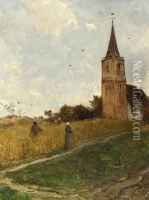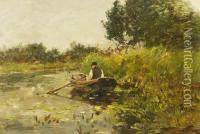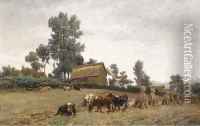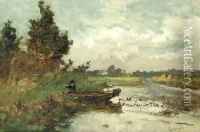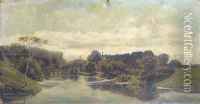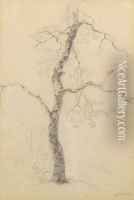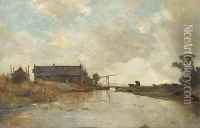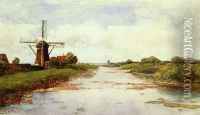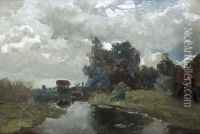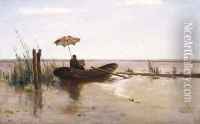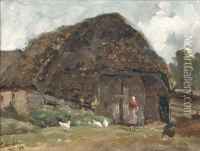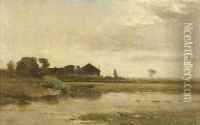Paul Joseph Constantine Gabriel Paintings
Paul Joseph Constantine Gabriel was a landscape painter from the Netherlands, born on July 8, 1828, in Amsterdam. Gabriel was known for his picturesque landscapes that often depicted the Dutch countryside, waterways, and rural scenes. He was associated with the Hague School, a group of artists who lived and worked in The Hague during the latter half of the 19th century. The Hague School artists were known for their realistic depictions of everyday life, often with a focus on the effects of light and atmosphere, which was an approach similar to that of the French Barbizon School.
Gabriel began his artistic training at the Royal Academy of Art in The Hague. He studied under various artists, including landscape painter Wijnand Nuyen. Throughout his career, he was influenced by the works of the Old Masters and the contemporary Barbizon School in France.
Paul Joseph Constantine Gabriel's work was characterized by a sensitive handling of color and light, with a particular attention to capturing the mood of the Dutch landscape. His paintings often featured skies, water, and the play of light on these elements, which he rendered with a delicate and often subtle palette.
Gabriel's work was well-received in his lifetime, and he exhibited his paintings in various exhibitions, including those organized by the influential art society 'Arti et Amicitiae' in Amsterdam. He also served as a teacher and mentor to younger artists, passing on the ideals of the Hague School.
The artist continued to work and exhibit until his death. Gabriel died on August 23, 1903, in Scheveningen, a district of The Hague, leaving behind a legacy of serene and evocative landscapes that captured the essence of the Dutch countryside. His works are held in high regard and can be found in many important art collections, both in the Netherlands and internationally.
